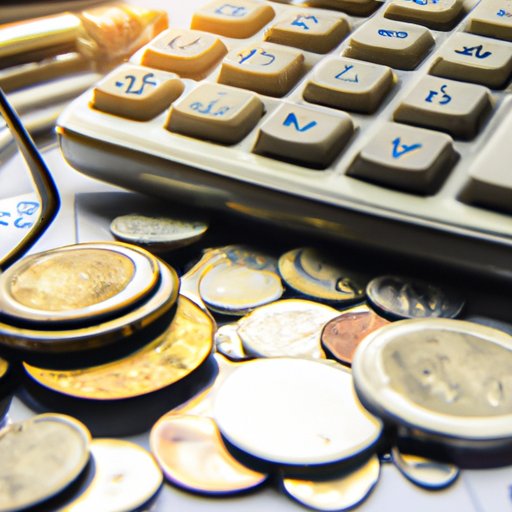Introduction
Capital equipment refers to large-scale items that are used in production processes or to provide services. It is important for businesses to understand what capital equipment is and how it impacts their operations. This article will explore the basics of capital equipment, provide a comprehensive guide to its use, and explain the benefits of investing in capital equipment. Additionally, this article will discuss the tax implications of purchasing capital equipment.

Exploring the Basics of Capital Equipment
Before diving into the details of capital equipment, it is important to understand what it is and how it can impact businesses.
What is Capital Equipment?
Capital equipment is any type of large-scale item used in the production process or to provide services. Examples of capital equipment include machinery, vehicles, computers, and office furniture. These items must be purchased or leased, and they usually have a long lifespan. Capital equipment is often expensive, so businesses must carefully consider whether the investment is worth the cost.
How Does it Impact Businesses?
Capital equipment can have a significant impact on a business’s operations. Investing in capital equipment can increase productivity, reduce operating costs, and improve quality. Additionally, capital equipment can help businesses stay competitive, as newer and more efficient models may be available. Finally, capital equipment can help businesses comply with regulations, such as safety regulations, which are often necessary for certain industries.
A Comprehensive Guide to Capital Equipment
Now that we have explored the basics of capital equipment, let’s take a closer look at how it can be used.
Types of Capital Equipment
There are many different types of capital equipment that can be used by businesses. Common examples include:
- Machinery
- Vehicles
- Computers
- Office Furniture
- Manufacturing Equipment
- Medical Equipment
The type of capital equipment needed will depend on the industry and the specific needs of the business. For example, a manufacturing company might need machinery, while a medical practice might need medical equipment.
Understanding the Value of Capital Equipment
Capital equipment can be an expensive investment, but it can also add value to a business. The value of capital equipment comes from the increased productivity, lower operating costs, and improved quality that it can provide. Additionally, investing in capital equipment can help businesses stay ahead of the competition, as newer and more efficient models may be available. Understanding the value of capital equipment can help businesses make informed decisions when investing in new equipment.

The Benefits of Investing in Capital Equipment
Investing in capital equipment can provide many benefits to businesses. Let’s take a look at some of the most common benefits.
Increased Productivity
Investing in capital equipment can help businesses increase their productivity. This is because newer and more efficient models of capital equipment can perform tasks faster and with fewer errors. This can save businesses time and money, allowing them to produce more goods or services in less time.
Lower Operating Costs
Another benefit of investing in capital equipment is that it can help businesses reduce their operating costs. This is because newer models of capital equipment are generally more energy-efficient, meaning they require less energy to operate. This can result in lower utility bills and other operating costs.
Improved Quality
Finally, investing in capital equipment can help businesses improve the quality of their products or services. Newer models of capital equipment are often more precise and reliable, resulting in fewer mistakes and better results. This can help businesses stand out from the competition and attract more customers.

Tax Implications of Purchasing Capital Equipment
When purchasing capital equipment, businesses should be aware of the tax implications. Let’s take a look at some of the most common tax implications of purchasing capital equipment.
Deductions for Capital Equipment
Businesses may be eligible for deductions when purchasing capital equipment. Depending on the type of equipment, businesses may be able to deduct the entire purchase price in the year of purchase. This can help businesses save money on taxes in the short-term.
Depreciation of Capital Equipment
Additionally, businesses may be able to depreciate the cost of capital equipment over time. This means that businesses can spread out the cost of the equipment over several years. This can help businesses save money on taxes in the long-term.
Conclusion
In conclusion, capital equipment is a large-scale item used in production processes or to provide services. This article has provided a comprehensive guide to capital equipment, exploring the basics, types, value, benefits, and tax implications. Investing in capital equipment can provide businesses with increased productivity, lower operating costs, improved quality, and potential tax savings. Understanding the implications of capital equipment can help businesses make informed decisions when investing in new equipment.


